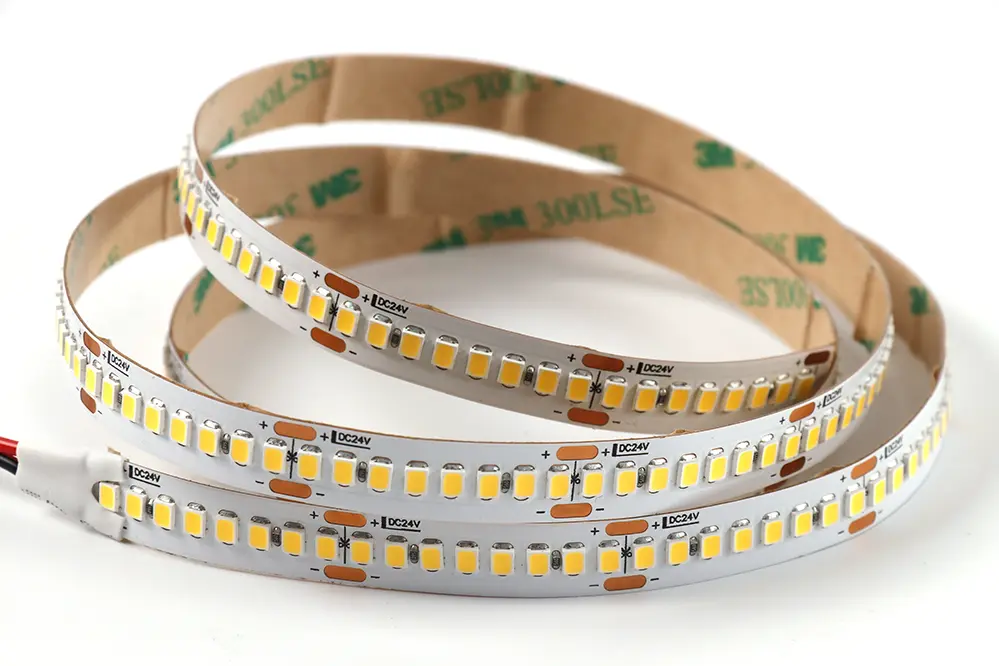LED strip lights have revolutionized the way we illuminate spaces, offering flexibility, efficiency, and a myriad of design possibilities. But with so many options on the market, how do you ensure you’re choosing a high-quality product? In this guide, we’ll walk you through the key factors to consider, ensuring you make an informed decision and get the best value for your money.
Understanding LED Strip Lights
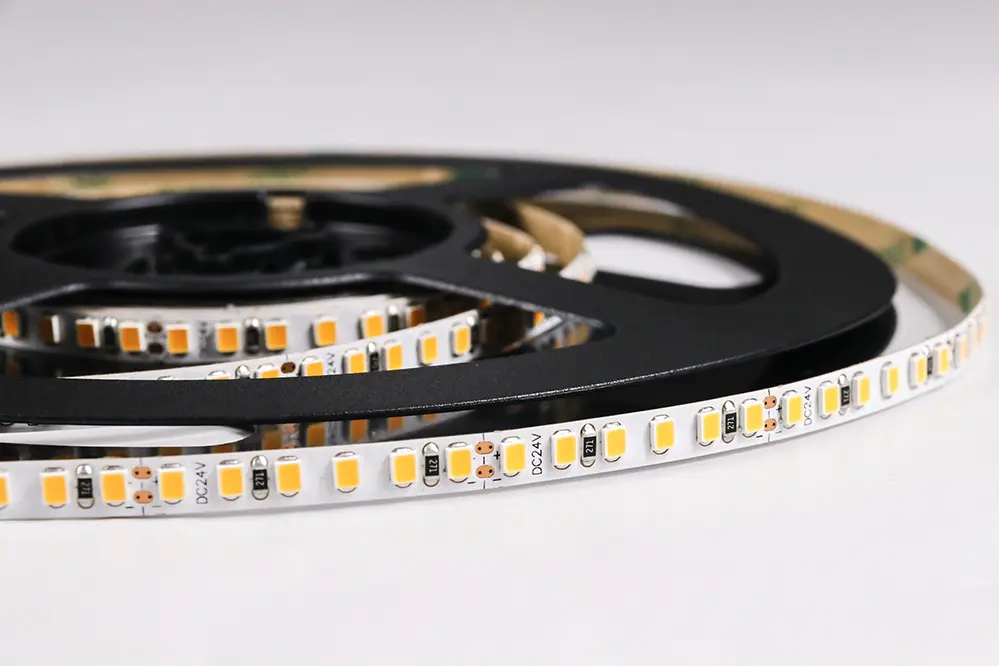
First, let’s get the basics down. LED strip lights are flexible circuit boards populated with LED chips that emit light. They are commonly used in various settings such as under-cabinet lighting, accent lighting, task lighting, and even outdoor applications. Their versatility makes them a popular choice for both residential and commercial spaces.
Key Factors to Consider
Choosing a high-quality LED strip light involves more than just picking the brightest option. Several factors play a crucial role in determining the overall performance and longevity of the lights.
Luminous Efficacy

Luminous efficacy measures the amount of light produced per unit of power consumed (lumens per watt). It’s a critical indicator of energy efficiency. For instance, a high-quality LED strip light should have an efficacy of at least 80 lumens per watt. This means you’ll get more light output while consuming less electricity.
When shopping for LED strip lights, always check the lumens per watt specification. Higher efficacy not only translates to better brightness but also lower energy bills. According to a report by the U.S. Department of Energy, increasing luminous efficacy is one of the most effective ways to enhance energy efficiency in lighting systems.
Color Rendering Index (CRI)
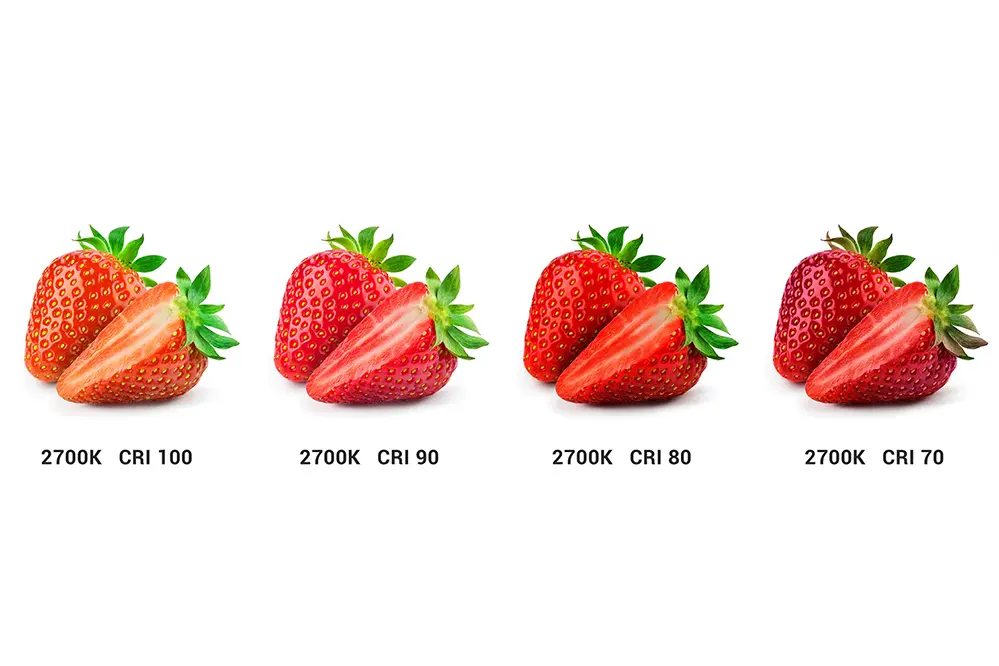
The Color Rendering Index (CRI) is a measure of how accurately a light source reveals the colors of objects compared to natural light. For most applications, a CRI of 80 or above is recommended, with 90+ being ideal for areas where color accuracy is crucial, such as in artwork or makeup applications.
A high CRI is especially important in retail environments where the true color of products needs to be visible. Poor color rendering can affect the ambiance and perceived quality of the items on display. For residential settings, high CRI lighting improves the overall aesthetics and comfort of your home.
Color Temperature
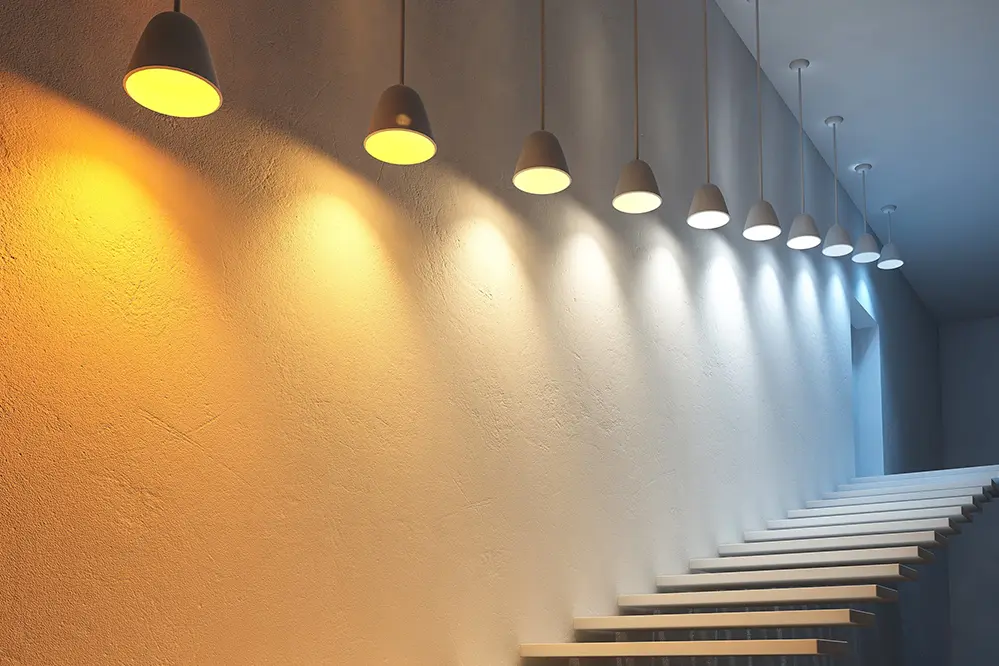
Color temperature, measured in Kelvin (K), describes the hue of the light produced by the LED strip. Here’s a quick guide to choosing the right color temperature:
• 2700K – 3000K: Warm white, ideal for cozy, intimate spaces like living rooms and bedrooms.
• 3500K – 4100K: Neutral white, suitable for workspaces and kitchens where a balance of warmth and brightness is needed.
• 5000K – 6500K: Cool white, great for task lighting in garages, workshops, and outdoor areas.
Choosing the right color temperature is crucial for setting the mood of a space. Warm white creates a relaxing atmosphere, perfect for unwinding after a long day. Neutral white offers a balance that is conducive to productivity, making it suitable for home offices and kitchens. Cool white, on the other hand, is bright and invigorating, ideal for areas where tasks require high visibility.
Build Quality
The build quality of LED strip lights significantly impacts their durability and performance. Let’s break down the key components.
LED Chip Quality
The quality of the LED chips used in the strip directly affects brightness, color consistency, and lifespan. Brands like Epistar, Cree, and Osram are known for producing reliable and high-performing LED chips. Investing in strips with these chips can save you from frequent replacements and color inconsistencies.
High-quality LED chips also tend to be more efficient, converting more electricity into light and less into heat. This improves both the brightness and the energy efficiency of the strip. Moreover, reputable brands often undergo rigorous testing to ensure their chips perform well under various conditions, providing peace of mind for long-term use.
PCB Quality
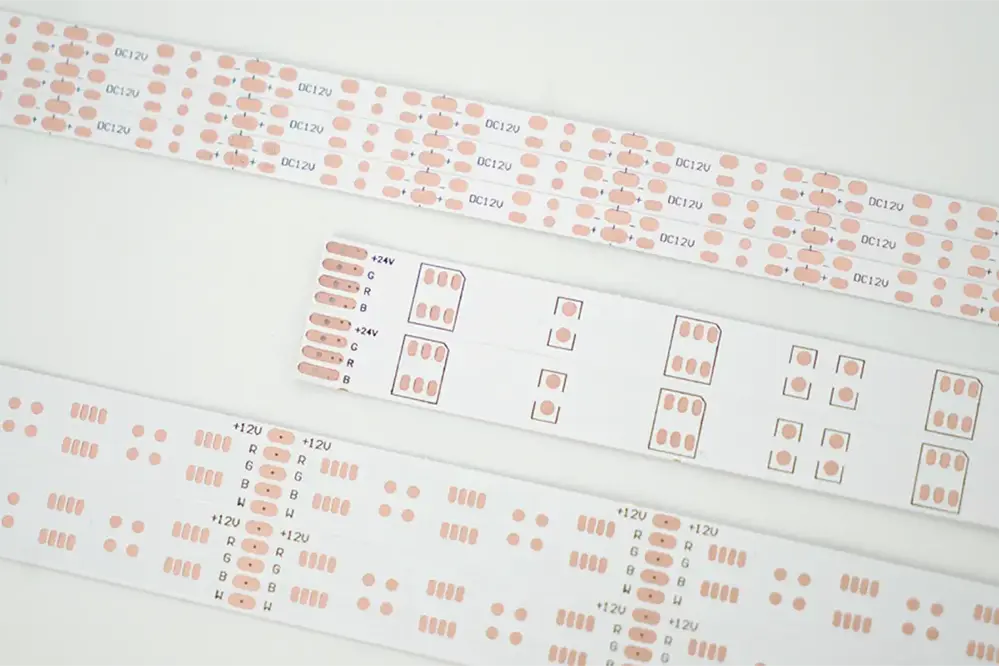
The Printed Circuit Board (PCB) is the backbone of the LED strip. A high-quality PCB ensures efficient heat dissipation and durability. Look for strips with double-layer PCBs, which offer better performance and longevity compared to single-layer ones.
A good quality PCB will be thicker and made of better materials, which helps in heat management and reduces the risk of thermal runaway. Proper heat dissipation is crucial because excessive heat can degrade the LED chips, leading to reduced brightness and shorter lifespan. Always check the specifications or ask the manufacturer about the PCB quality when purchasing LED strip lights.
Power Supply and Compatibility
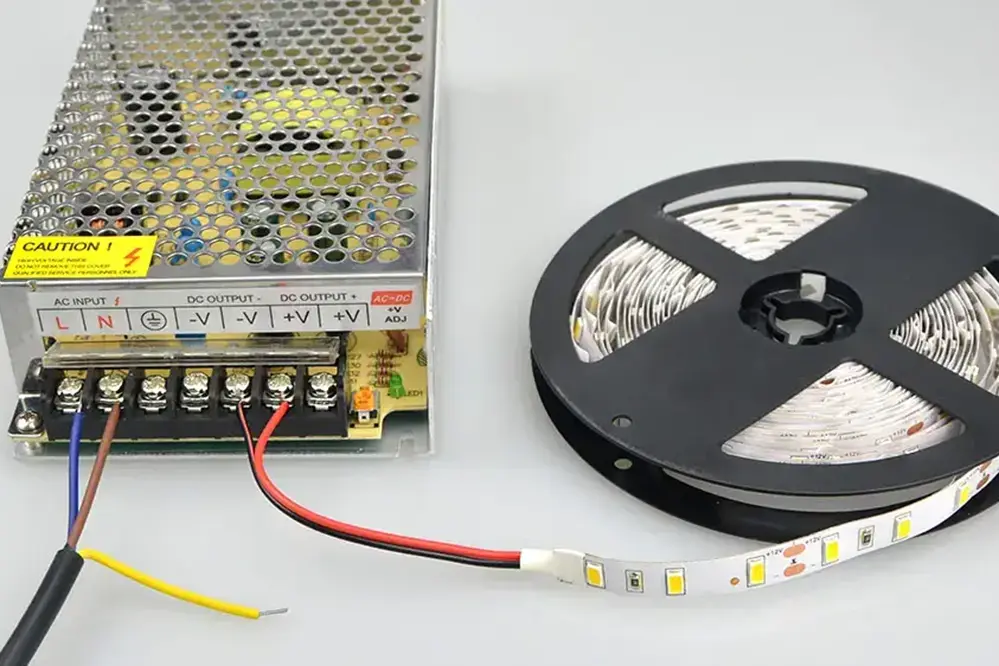
A reliable power supply is crucial for the safe and efficient operation of LED strip lights. Ensure the power supply matches the voltage and current requirements of your LED strips to avoid issues like overheating and reduced lifespan.
Voltage and Current Requirements
LED strip lights typically operate on 12V or 24V. Ensure your power supply matches the voltage requirement of your LED strips. Additionally, calculate the total wattage of your strips and choose a power supply with at least 20% more capacity to handle the load comfortably.
For example, if your LED strip consumes 60 watts in total, choose a power supply that can handle at least 72 watts. This overhead capacity ensures that the power supply operates efficiently without being overloaded, which can extend its lifespan and ensure consistent performance.
Dimming and Control Options
Not all LED strip lights are dimmable, so if you want to control the brightness, make sure you choose a dimmable option. Various control methods are available, including remote controls, wall dimmers, and smart home systems. Ensure your LED strip is compatible with the dimming method you prefer.
Smart home compatibility is becoming increasingly popular, allowing users to control their lighting via apps or voice commands through systems like Amazon Alexa or Google Home. These advanced control options offer convenience and the ability to create customized lighting scenes to suit different moods and activities.
Waterproof and Weatherproof Features
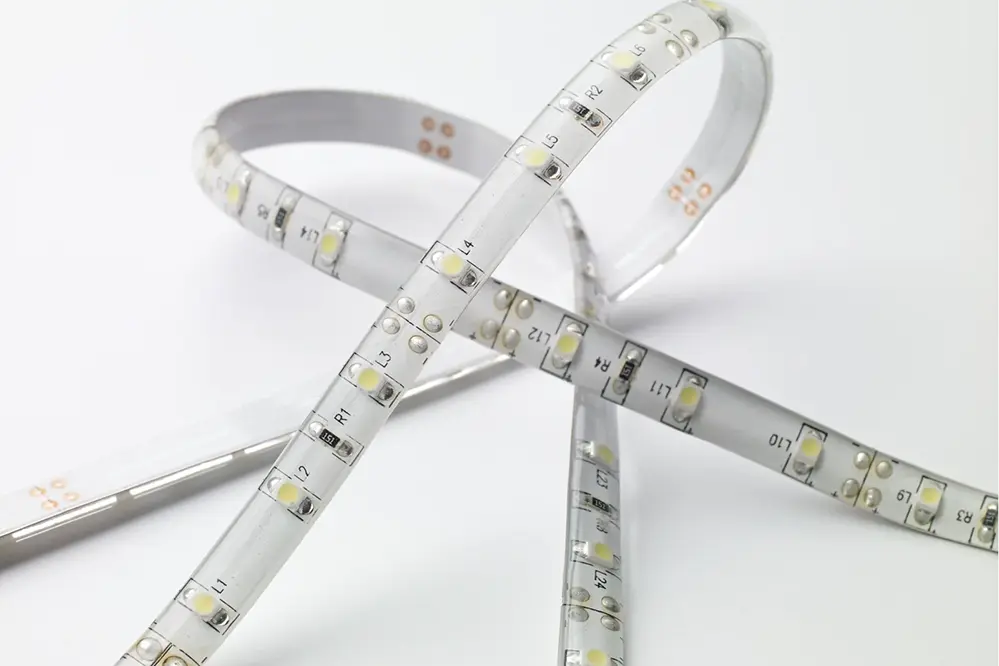
If you plan to use LED strip lights outdoors or in damp environments, check the IP rating. The IP (Ingress Protection) rating indicates the level of protection against dust and water. Here’s a quick guide:
• IP20: Suitable for indoor use where there’s no exposure to water.
• IP65: Splash-proof, suitable for kitchens and bathrooms.
• IP67: Water-resistant, can withstand temporary submersion.
• IP68: Waterproof, suitable for continuous immersion.
Understanding IP ratings helps ensure you choose the right LED strip for your environment. For instance, using an IP20 strip in an outdoor setting would likely lead to damage and failure. On the other hand, an IP68 rated strip can be used around swimming pools or fountains without any issues.
Installation and Flexibility
The ease of installation and flexibility of the LED strip light can make a significant difference, especially for DIY projects.
Adhesive Quality
Many LED strips come with adhesive backing. Ensure it’s strong enough to hold the strip in place over time. If you’re installing in areas prone to heat or moisture, consider using additional adhesive solutions for extra security.
A strong adhesive ensures that the strip remains in place, even on surfaces that might be uneven or prone to vibrations. In high-temperature areas, look for heat-resistant adhesives. For instance, 3M is a well-known brand for high-quality adhesives that can withstand various conditions.
Connectors and Accessories
High-quality connectors and accessories are essential for a seamless installation. Poor connectors can lead to unreliable connections and signal loss, affecting the performance of your LED strips. Look for kits that include a variety of connectors to suit different installation needs.
When installing LED strip lights, the quality of connectors and accessories can significantly impact the overall experience. Good connectors ensure a reliable electrical connection, minimizing flickering and ensuring consistent brightness. Additionally, high-quality connectors are easier to work with, reducing the risk of damage during installation.
Warranty and Support
Finally, a good warranty and responsive customer support can save you a lot of headaches. Look for products that offer at least a two-year warranty. This indicates the manufacturer’s confidence in their product. Additionally, check reviews for insights into the company’s customer service quality.
A comprehensive warranty provides peace of mind, knowing that you are covered in case of defects or performance issues. Responsive customer support is equally important, especially if you encounter any problems during installation or use. Companies that stand behind their products typically offer better customer service and are more likely to assist with any issues that arise.
Additional Insights on LED Strip Light Quality
To further enhance your understanding and help you make the best decision, let’s delve deeper into some of the more nuanced aspects of LED strip light quality.
Thermal Management
Effective thermal management is crucial for maintaining the performance and longevity of LED strip lights. LEDs generate heat, and without proper dissipation, this heat can lead to decreased efficiency and a shorter lifespan. High-quality LED strips often feature materials and designs that enhance thermal management.
For example, aluminum PCBs are superior in dissipating heat compared to fiberglass PCBs. Some high-end LED strips also come with integrated heat sinks. Ensuring good ventilation around your LED strips can also help in maintaining optimal temperature and performance.
Bin Sorting
LED bin sorting refers to the process of grouping LEDs based on their color and brightness. This ensures color consistency across the strip. High-quality manufacturers invest in meticulous bin sorting processes to maintain uniformity in their products.
Inconsistent binning can lead to noticeable color variations along the strip, which can be particularly problematic in applications requiring uniform lighting, such as in retail displays or architectural lighting.
Flicker-Free Operation
Flicker can be a significant issue with lower-quality LED strips, especially when dimmed. Flicker not only causes discomfort and eye strain but can also have more severe health impacts over prolonged exposure. Look for LED strips that are marketed as flicker-free or have a high-frequency PWM (Pulse Width Modulation) dimming technology to minimize flicker.
Smart Features
Modern LED strip lights often come with smart features that enhance their usability and functionality. These features include integration with smart home systems, customizable lighting scenes, and even synchronization with music or visual media.
When choosing an LED strip light, consider whether these smart features are important for your application. Brands like Philips Hue and LIFX offer advanced smart lighting options that can be controlled via apps, voice commands, and even automated schedules.
Environmental Impact
If sustainability is a priority for you, consider the environmental impact of your LED strip lights. High-quality LED strips are more energy-efficient, reducing overall power consumption. Additionally, look for products from manufacturers that adhere to eco-friendly practices, such as using recyclable materials and reducing hazardous substances in their products.
Cost vs. Quality
While it might be tempting to opt for the cheapest option available, investing in higher-quality LED strip lights can save you money in the long run. Cheaper products often have a shorter lifespan, lower efficiency, and can be prone to failures, leading to higher replacement costs and potential damage to your property.
Quality LED strip lights, although more expensive upfront, provide better performance, longevity, and peace of mind. They also typically come with better warranties and customer support, ensuring you are covered in case of any issues.
Real-World Applications and Case Studies
To illustrate the importance of choosing high-quality LED strip lights, let’s look at a few real-world applications and case studies:
Case Study 1: Retail Store Lighting
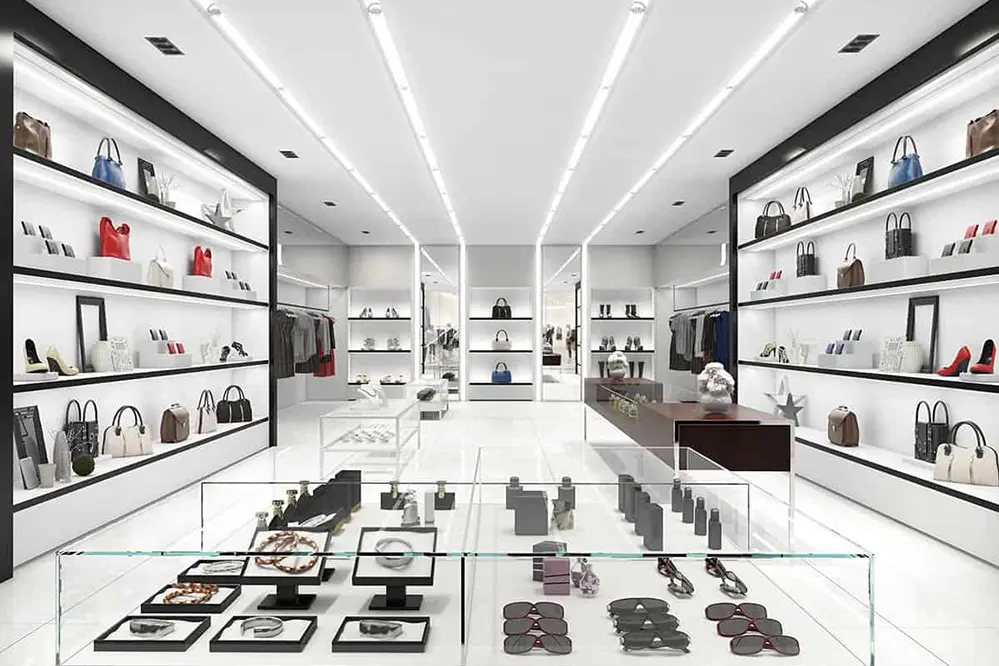
A retail store wanted to upgrade its lighting to enhance product displays and create a more inviting atmosphere. After installing high-CRI, high-efficacy LED strip lights, the store noticed a significant improvement in the appearance of products. Customers could see colors more accurately, and the overall ambiance of the store improved, leading to increased sales and customer satisfaction.
Case Study 2: Residential Kitchen Upgrade
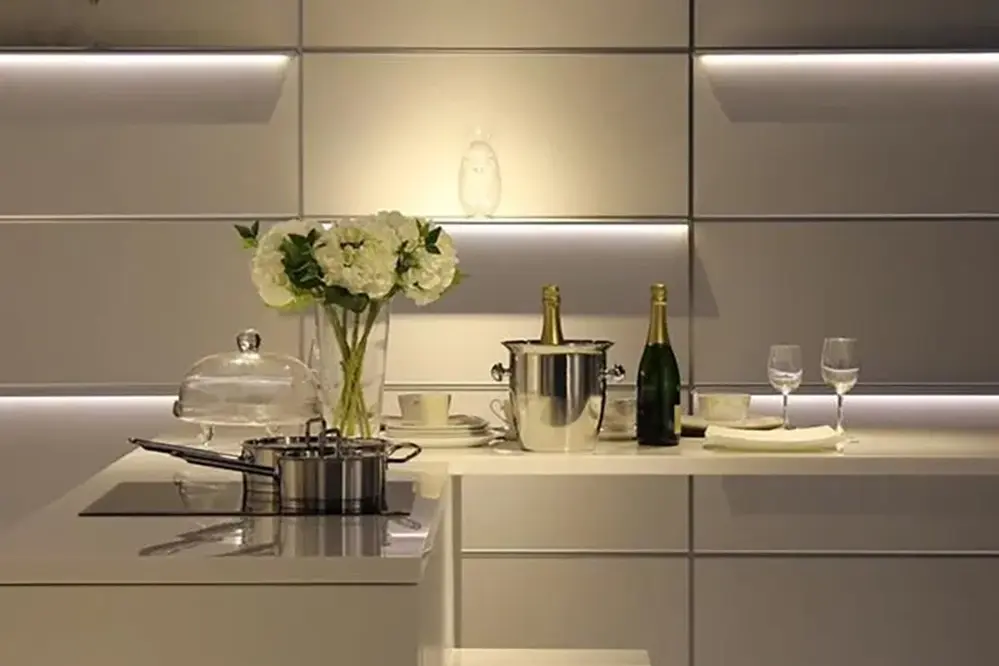
A homeowner decided to upgrade the kitchen lighting with LED strips for better task lighting and ambiance. They chose strips with a color temperature of 4000K and a CRI of 90. The result was a well-lit kitchen with excellent color rendering, making food preparation easier and more enjoyable. The high-quality adhesive backing ensured the strips stayed in place even in the humid kitchen environment.
Case Study 3: Outdoor Patio Lighting
For an outdoor patio, a restaurant owner needed waterproof LED strip lights to create a cozy dining atmosphere. They selected IP68-rated strips with a warm white color temperature. Despite exposure to rain and moisture, the LED strips performed flawlessly, enhancing the outdoor dining experience and attracting more customers.
FAQs
What is the ideal CRI for indoor lighting?
For most indoor lighting applications, a CRI of 80 or above is recommended. For areas where color accuracy is critical, such as art studios or makeup rooms, a CRI of 90+ is ideal.
Can LED strip lights be cut to fit specific lengths?
Yes, most LED strip lights can be cut at designated points. These points are usually marked on the strip, making it easy to customize the length to fit your space.
How do I know if an LED strip light is dimmable?
Check the product specifications. Dimmable LED strip lights will be clearly labeled. Additionally, ensure your power supply and controller are compatible with dimmable LED strips.
What is the lifespan of high-quality LED strip lights?
High-quality LED strip lights can last between 30,000 to 50,000 hours, depending on usage and environmental conditions. This translates to approximately 10-15 years of regular use.
Are there specific brands known for high-quality LED strip lights?
Yes, some well-known brands include Philips Hue, LIFX, and Govee. These brands are known for their reliable performance, excellent build quality, and strong customer support. Investing in products from reputable brands often ensures better longevity, higher energy efficiency, and superior lighting quality.
Conclusion
Choosing the right LED strip light involves a careful evaluation of multiple factors, from luminous efficacy and CRI to build quality and power supply compatibility. By considering these elements, you can ensure that your LED strip lights not only meet your lighting needs but also provide long-term value.
In summary, focus on the following key points:
• Luminous efficacy for energy efficiency
• CRI for accurate color rendering
• Color temperature for setting the right mood
• Build quality of LED chips and PCB
• Power supply compatibility for safe operation
• Waterproof ratings for specific environments
• Ease of installation and quality of accessories
• Warranty and customer support for peace of mind
By understanding and prioritizing these factors, you can select LED strip lights that offer optimal performance, longevity, and energy efficiency. Whether you’re enhancing your home’s ambiance or adding functional lighting to your workspace, high-quality LED strip lights can make a significant difference.
For those looking to purchase top-notch LED strip lights in bulk quantity, consider reaching out to Unitop. As a professional Chinese manufacturer, Unitop specializes in LED strip lights and LED neon strips. Our expertise and commitment to quality ensure that you receive the best products for your needs. With a wide range of options and exceptional customer support, Unitop is well-equipped to help you find the perfect lighting solution for any application. Contact us directly to explore our offerings and receive expert guidance.
